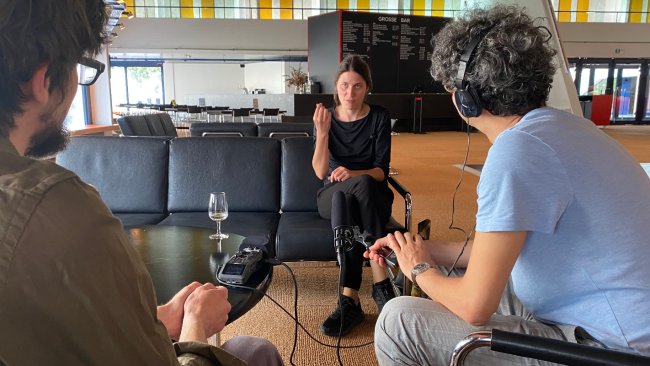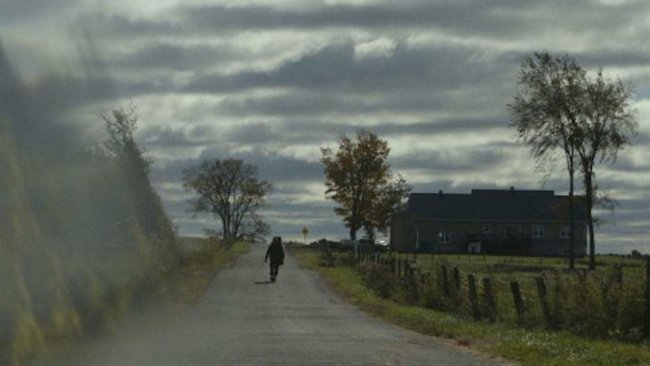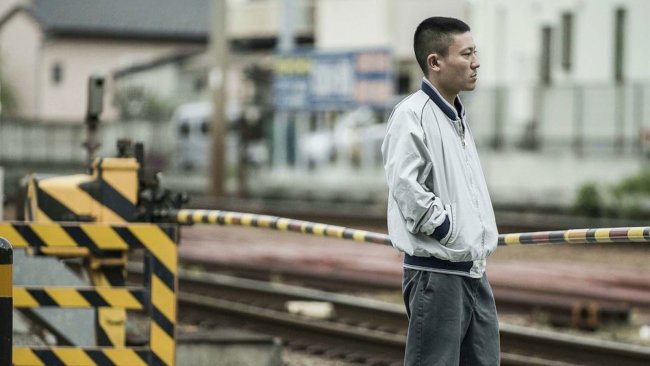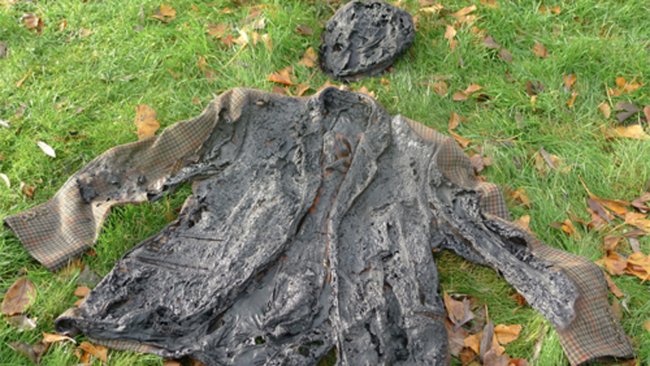A Fidai Film
[…] The absence of context makes the images float on an intemporal bubble of destruction and discrimination: violence haunts the images as an immanent element.
Text: Giuseppe Di Salvatore

Can memory be stolen? Can memory be concealed? Kamal Aljafari’s last filmic work on archive material is an eloquent, affirmative answer, which simultaneously commits itself to opposing this theft and attempted killing through its public denouncing: Israeli military forces have systematically looted Palestine film archives in order to study “the enemy” and concurrently to steal the filmic evidence of Palestine’s past, but more than evidence is here at stake. Since WWI wars have made of films not only pieces of evidence but instruments of propaganda, that is to say weapons. With this kind of consciousness we can understand why, in 1982, the Palestinian Research Centre was “burgled” during the Israeli occupation of Beirut, making disappear a rich filmic archive. The first immediate gain of A Fidai Film, therefore, is the discovery of Palestine in the Thirties, in a sort of «museum of days» (like the celebrated song repeatedly sang in the film footage ) that allows us to reconnect with the neglected history of the British colonial Protectorate, during the repression of the 1936-1939 revolt, that killed, injured, imprisoned and expelled 10% of Palestinians – an impressive number –thanks also to Orde Wingate’s Special Night Squads, where members of the paramilitary Jewish Settlement Police were hired.
Kamal Aljafari’s film does not actually deliver all of this information, even if his intervention in the Q&A at the festival Visions du Réel in Nyon was generous with complementary information. Aljafari’s work with the archive material is more complex and intriguing than the simple one of delivering information, insofar as he considers the archive material as a field of research, of discovery, of experience, where the smile of a street merchant or the fear in a child’s eyes are probably more important and illuminating than a collection of historical data. Furthermore, the exposure of this archive material should be given enough room, in order for us to appreciate the gesture of the shooting, its meaning, its intention. This is the reason why the exposed images cannot be reduced to serving a discourse or a storytelling, but they should be able, on the one side, to refer to their production – to pay homage to «the camera of the dispossessed», to quote Aljafari himself – and, on the other, to be considered now just as exposed images, as images liberated from the obscurantist strategy of any war of memories, of wars against memories.
The evaluation of the images as such is an important key to accessing Kamal Aljafari’s peculiar treatment of this archive material. In fact, in this way we become sensitive and aware of the sheer existence of these images, and then of their cinematic presentation, which constitutes a further, different approach to archive film footage in comparison to Aljafari’s previous works of Recollection (2015) or An Unusual Summer (2020) – just to mention two previous feature films that focus explicitly on old film footage. If in Recollection the intention of the filmic images was diverted in order to build an alternative narrative of the past, and in An Unusual Summer the surveillance camera was interrogated as dispositive and as occasion to give depth and meaning to the invisible surface of daily life, the gesture of A Fidai Film is more radical than an invitation to watch differently or watch behind the opacity of politically formatted or apparently insignificant images. It is the invitation of being with the hidden images, to be on the side of the violence of forced forgetting. In fact, Aljafari proposed a counter-narrative in the double sense of the word: a narration that resists its being violently muted – this is a weapon against another weapon in the war of memories and evidences – and an anti-narration, one that eschews or is simply not able to sustain a discourse, a narration that is a cry made of self-explanatory images, of pieces of reality more than pieces of evidence.
To my eyes, this second sense of “counter-narration” makes of A Fidai Film an original and unforgettable film. This sense emerges through the experience of the film, which, far from being edifying, is a tiring experience. Kamal Aljafari’s film does not provide us with the benefits of information, clarity, knowledge, even if it would be a concerned benefit, of course. The more or less chronological presentation of the archive material aside, we have almost no other thread to follow. The editing (Aljafari with Yannig Willmann) insists on the fragmentation of the material itself, which speaks for the actual fragmentation of the material as it is today, recollected through and from different sources. The absence of context makes the images float on an intemporal bubble of destruction and discrimination: violence haunts the images as an immanent element, until Aljafari’s destructive intervention with a red pencil on the film against the Israeli cataloguing (weapon against weapon). Therefore, A Fidai Film is not only a weapon but the material witness of bombs, as if the matter of film would or should bear all the possible traces of the physical and social disintegration that has been and still is the main weapon against Palestine and Palestinians.
The sabotage (fidai) element of the film is double: through the resistance of recollecting what has been concealed, but also through the dramatic exposure of the disintegration as the ultimate weapon and, moreover, as filmic experience. A Fidai Film provides a paradigmatic experience of the “poetics of the bomb” that connotates Modern History. The hard task of this poetics of the bomb will be summarised in the instruction that Aljafari brilliantly underlines zooming on the top of a reel box: «To develop in total obscurity».
This article contains a third-party video. If you would like to watch the video, please adjust your settings.
Info
A Fidai Film | Film | Kamal Aljafari | PSE-DE-QAT-BRA-FR 2024 | 78’ | Visions du Réel Nyon 2024
First published: April 22, 2024



